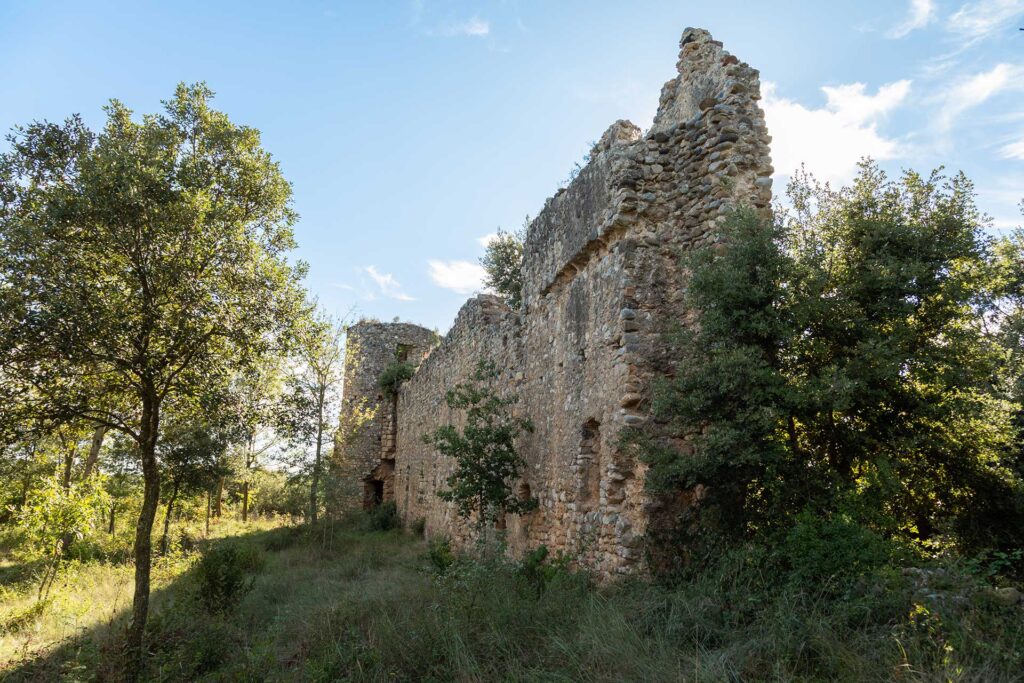
The ruins of Navata Castle are located two kilometres southwest of the village. The best-preserved wall is to the west, which is attached to the cylindrical tower at the southwest corner. It was built with cut pebbles in rows. Several rectangular embrasures and the battlements at the top of the tower can also be seen. The rectangular chapel is located at the base of a corner tower of the wall. Despite being in ruins, some of the architectural elements remain standing. King Alfonso gave the town of Peralada to Bernat de Navata and his wife in 1190. In 1249, Ermessenda, daughter of Arnau de Navata, married Dalmau Rocabertí, a union that passed the barony of Navata to the viscount's family. In 1968, and while still in the possession of the Rocabertí family, Navata was the seat of a local municipal government that included members of the Ordins, Espinavessa, and La Palma families. The walls of the nave were built out and the bell tower was modified in the 17th and 18th centuries. The rectory, located next to the church, dates from the 17th century, as evidenced by a lintel with the inscription ‘1670’.
Literary Text
A Navata comença l’estesa d’oliveres. Cap a mar s’esllavissen les fulles argentades. El mar palpita just quan el garbí l’encrespa i l’olivera, l’arbre seu, el gris que l’acompanya. El reflex de la plata fa unes aigües molt vives. A Espanya n’hi ha moltes i a Grècia són sagrades. La glòria i la pau en feien sa divisa, Atenes en coronava la testa dels atletes, a l’Arca de Noé n’arribava un esqueix. El Senyor fou rebut amb branques d’olivera.
FLUVIÀ, de Joan Teixidor
Text published on the Espais Escrits mapaliterari.cat website. Catalan Literary Heritage Network.
Location
-
Camí De La Serra, 17744 Navata, Provincia de Gerona, España


Add a review